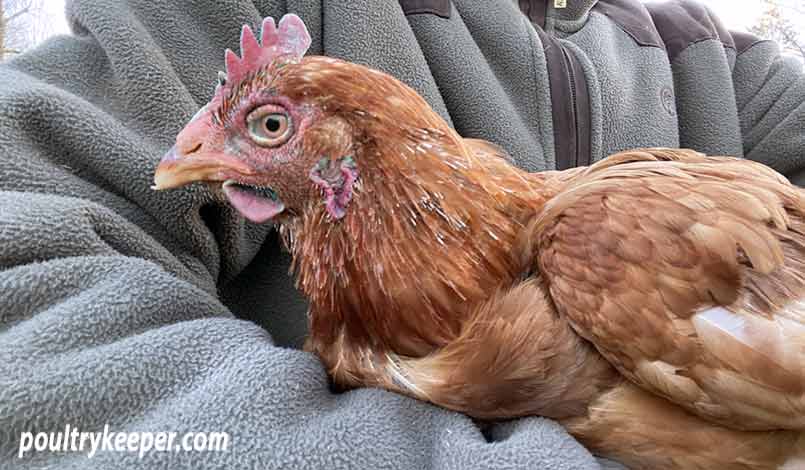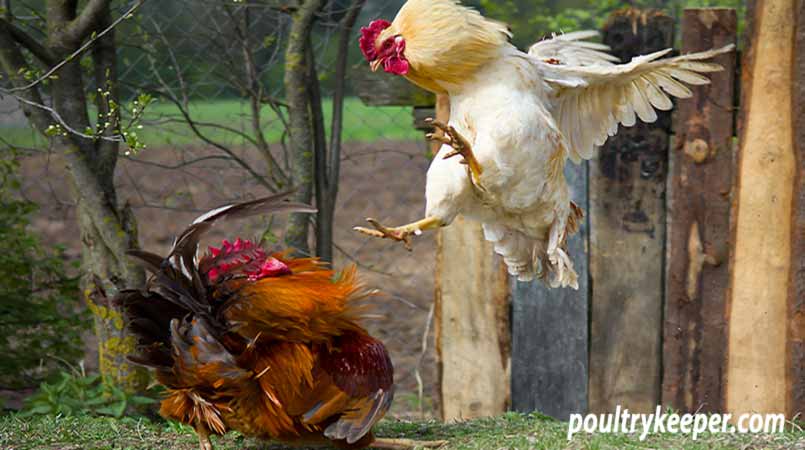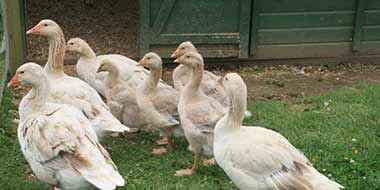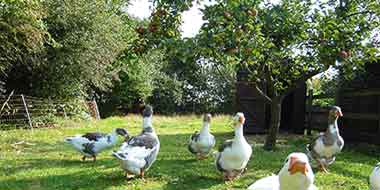
Euthanising or killing a chicken is one of the less attractive aspects of keeping chickens, and of course, a vet can do this for you, but it is sometimes necessary for us to know how to dispatch a chicken at home.
We have a duty of care for every chicken in our flock and must prevent unnecessary suffering. If a bird is suffering and has no chance of recovering, it can sometimes be kinder to kill it than to leave it in the hope that it might get better.
In this guide, I will show you how to dispatch a chicken. Please note, this article contains some images that may be upsetting for some people.
The cockerel problem
Many newcomers to the hobby will buy an incubator and hatch out some chicks to find they have more cockerels than they can keep or re-home. Unfortunately, there is no easy way to sex embryos inside an egg, and on average, you will hatch 50% male and 50% female chicks. Unless these are autosexing breeds or sex-linked hybrids, it is difficult to know how to sex the chicks.
Before you know it, you have many cockerels starting to crow and are eating a lot! You realise that the elephant in the room is you have to dispatch them.
At first, cockerels will get on together but come next year, when they have matured and the breeding season starts, they will begin to fight, so it is better to face reality sooner than later. It takes a considerable amount of feed before a cockerel reaches maturity, so I would encourage you to make tough decisions sooner than later.
Surplus male birds in a flock cause problems: fighting amongst themselves and causing injury to one another and mating excessively with the hens, causing spur wounds on their sides and back.
I’m sure you’ve heard of cockfighting. Sometimes, even our typical backyard breeds will fight to the death.

Killing a sick chicken
Sometimes we need to know how to kill a chicken in an emergency because it is suffering and has no chance of recovery- a fox or dog attack for example that has left a chicken badly injured and in pain.
Taking a hen to the vet is one option, but vet costs build up and when your chicken cost under £20 to start with. Expensive bills can put you off chicken keeping, so it’s better to know how to take responsibility to deal with terminal disasters in a quick, efficient, humane and all importantly, legal manner.
Whatever the reason you need to kill a chicken, you need to learn how to dispatch a chicken effectively. By effectively, I mean quickly with the minimum amount of pain.
We must do what is best for our birds, and sometimes that means we have to “grasp the nettle” and dispatch a chicken.
How to dispatch a chicken
Whilst I have used the neck dislocation method for years, I wondered whether this was the most humane that we can practise at home. There are several wall-mounted ‘dispatchers’ sold that looked like they might be the answer.
The people who know about this in the UK are the Humane Slaughter Association (HSA), and I found some interesting information about the various methods of killing a chicken.
It turned out that the HSA does not recommend wall-mounted dispatchers and handheld pliers that may claim to dislocate the neck. They crush the neck without stretching or breaking blood vessels, or concussing the brain. It is unlikely to be a fast method of killing a chicken. It can leave the bird in a lot of pain if it doesn’t go well.
The recommended method of dispatching a backyard chicken (in the UK) is first to stun, which could be using a captive bolt gun designed for poultry, or by electric stunning that renders the animal unconscious before dispatching it.
Due to the high price of electric stunning equipment, I looked for a captive bolt gun. When updating this article (January 2021) I could only find companies abroad selling them at around £300 with the shipping charges.
The neck dislocation method without stunning is permitted for small numbers of birds, where no other stunning methods are available or as a backup method. Still, if you can get a captive bolt gun suitable for poultry, that would be better.
The neck dislocation method
When killing a chicken, the aim is to minimise suffering, so the bird becomes unconscious as quickly as possible. If done correctly, the neck is dislocated, and the bird becomes unconscious very quickly.
The HSA suggest it takes around 15 milliseconds; it’s not immediate as I thought. I feel that getting the technique right is essential to keep this to a minimum.
Ideally, get an experienced poultry keeper to show you how to dispatch a chicken. It is not very easy to describe the method or to show it in pictures.
This method can also be used on other small poultry but unless you are experienced, do not attempt it on larger birds like heavy breeds of ducks. The ‘broomstick method‘ of neck dislocation has in the past been used for large ducks, geese and turkeys.
Warning:
The tabs below contain images to demonstrate how to dislocate a chicken's neck. Please do not proceed further if you are upset easily.
Catch the bird calmly, ideally in the evening when the bird is roosting and calm. Take it to a quiet location away from the other birds’ sight and where they won’t become stressed if hearing any noises such as the flapping of wings.

When you are ready, hold the bird’s legs firmly with your weakest hand (i.e. your left hand if you are a right-handed person).
The legs should be held tightly together, just above the feet, making sure you avoid any spurs from hurting you if it’s a mature male bird.
Step forward slightly on the side you are holding the bird. Place the bird’s breast on your thigh to support its weight during dispatch. The bird is now upside down with the head being the lowest point of the bird and the legs the highest point.
Use your other hand to hold the head. When you pull down, you also want the neck to be at ninety degrees so it breaks quickly and easily.
 With one quick, firm action, stretch the neck downwards bringing the head backwards at the same time.
With one quick, firm action, stretch the neck downwards bringing the head backwards at the same time.
Expend to feel the neck stretch by a couple of inches.
When you feel this, stop pulling, you will have dislocated the neck, but the skin should remain unbroken.
 Keep holding the legs tightly.
Keep holding the legs tightly.
Expect flapping of wings and kicking of legs for anything between 3 and 10 seconds after the dislocation.
This is nothing to worry about. The muscles go into spasm when the spinal cord is dislocated, disconnecting them from the brain.
The bird is not in any pain at this point, providing the neck is dislocated.
You can check the dislocation. Run your fingers and thumb down the neck. You will feel a gap before the head. Internal bleeding will quickly fill this space with blood.
The broomstick method
You may find it easier (especially with large cockerels) to use the broomstick method. Instead of holding the neck, place the bird’s head on the ground, comb upwards, beak pointing away from you and place a broom handle over the back of the neck up against the comb. Place your feet either side to securely hold the head and pull upwards on the feet to stretch the neck in one motion.
Conclusions
“Grasping the nettle” is tough, but remember knowing how to kill a chicken was considered an everyday rural skill just a few generations ago.
Once you have mastered the neck dislocation method to humanely euthanase a bird, this opens up the possibility of keeping a few chickens for meat too.




